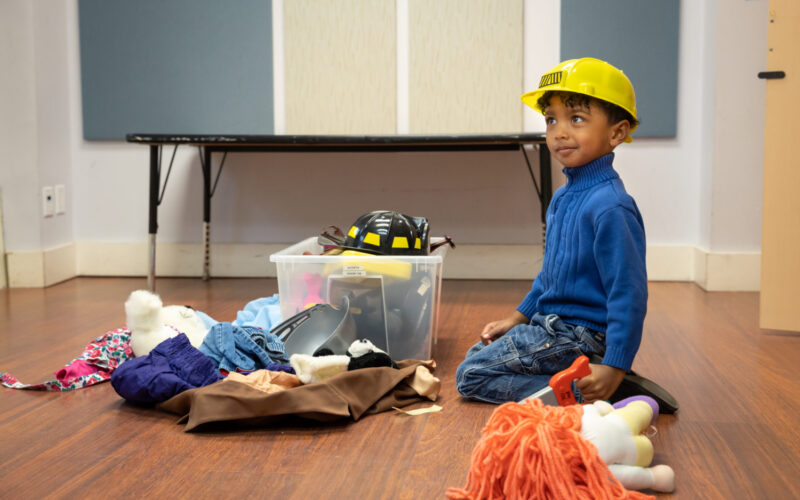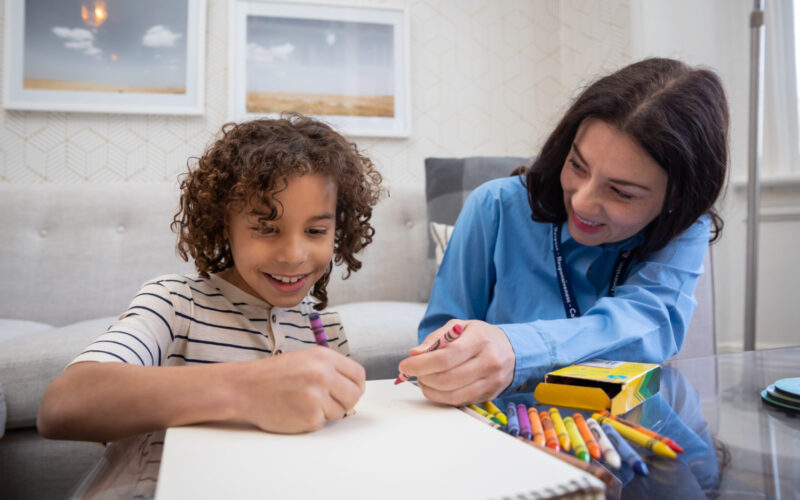Tips for Helping Your Child Transition Between Activities
OCTOBER 9, 2020
Transitions refer to your child’s ability to stop using a toy or activity and move to a new item or activity, such as moving from iPad time to dinner time. Transitions can occur at home, school, or in the community and may also involve moving between locations (e.g., from home to the grocery store or from the classroom to the playground at recess).
THE IMPORTANCE OF SUCCESSFUL TRANSITIONS
- Transitioning between different activities makes our day run smoothly and successfully
- Sometimes routines change unexpectedly, or you need to transition to an activity that your child doesn’t like
- Transitions will always be a part of your child’s daily life – it’s important to prepare them to handle transitions independently in many different situations
- Being able to transition independently increases access to opportunities in school and provides more time for learning
- Transitioning can be stressful for parents – being prepared for transitions helps to reduce stress and fear of stigma in public
- Set up a schedule (e.g., visual or written) – let your child know ahead of time what is going to happen throughout the day, the order of activities, and when each activity starts/stops.
- Use a first/then board – let your child know that first they need to complete a non-preferred activity, then they can access a preferred item. This can help motivate your child to complete less preferred tasks because they know they get something rewarding after (e.g., iPad after chores).
- Use a timer – let you child know how much time is left before the activity ends. Timers can prepare them for the transition and set them up for a success. You can also use verbal time warnings.
- Use a transition object – Give your child something that they can bring with them on the transition (e.g., when transitioning from play time to bath time, they can carry their favourite toy with them to the bath). This can help make the transition less stressful.
- Use a reinforcer and celebrate successful transitions – if your child is doing well transitioning, let them know! You can give verbal praise, offer a preferred toy, or give a little extra time with the activity they like. Reinforcement will help teach your child what they are expected to do during these transitions and increase their success in the future.
Be consistent & predictable – Use the same strategies across all transitions, even easy ones!
- This can help your child practice transitioning and prepare them for using this skill with more difficult transitions (e.g., when transitioning away from preferred items)
Offer choices – Before ending an activity, offer a choice of two ‘next’ activities
- This can increase motivation and independence while maintaining control of the transition
- For example, you can say “iPad is all done, next, you can pick drawing or reading”
Promote Communication – Consider teaching your child to ask for ‘more time’
- This gives your child the opportunity to communicate that they aren’t ready in a way that is appropriate and functional
- Keep in mind, ‘more time’ should only be used once in a transition and can’t always be honored
- Reduce the Number of Transitions – Consider planning your schedule with the smallest number of transitions possible
- Reducing the number of “hard” transitions can help set your child up for success while reducing stress and anxiety
- Hume, K., Waters, V., Sam, A., Steinbrenner, J., Perkins, Y., Dees, B., Tomaszewski, B., Rentschler, L., Szendrey, S., McIntyre, N., White, M., Nowell, S., & Odom, S. (2020). Supporting individuals with autism through uncertain times. Chapel Hill, NC: School of Education and Frank Porter Graham Child Development Institute, University of North Carolina at Chapel Hill. Retreived from: https://afirm.fpg.unc.edu/covid19-toolkit
- Hume, K. (2008). Helping individuals on the Autism Spectrum move successfully from one activity to another. Indiana Institute on Disability and Community. Retrieved from: https://www.iidc.indiana.edu/irca/articles/transition-time-helping-individuals-on-the-autism-spectrum-move-successfully-from-one-activity-to-another.html


